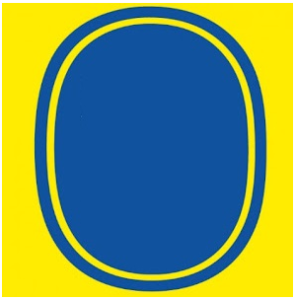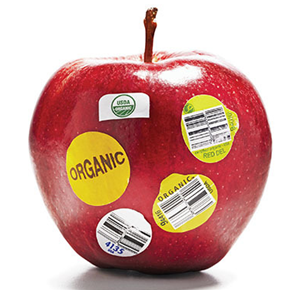Justice Manmohan Singh of the Delhi High Court has remarked in a judgment, “The world is a global village.” This sentiment captures the essence of our interconnected era, where globalization and interconnected markets continually redefine our world. Today, the judgments handed down in courtrooms across the globe can have far-reaching consequences and the ripples of these legal decisions extend far beyond their local jurisdictions, influencing economies and industries worldwide.
Welcome to “A View from Afar,” a series dedicated to examining international judgments and their far-reaching impacts. Through this series, we aim to bridge the gap between diverse legal systems and their global repercussions, offering you a panoramic view of the intricate interplay between law and commerce.
We will delve into landmark rulings from various corners of the world, unpacking the legal reasoning behind such decisions and scrutinizing their practical implications. Each article will provide a thorough analysis, shedding light on how these judgments affect not only the parties directly involved but also affect the regulatory frameworks, corporate strategies, and market dynamics on a global scale.
Whether it is a judgment delivered in any country across the world, we will share our views on its profound impact in other jurisdictions navigating through the labyrinth of international jurisprudence.
Join us in this further instalment of “A View from Afar” as we analyse the significant ruling, of the General Court of the European Union (GC) wherein it upheld the decision of the European Union Intellectual Property Office (EUIPO) to invalidate Chiquita’s trademark having a blue and yellow oval design, marking a notable development in the interpretation of trademark validity, particularly with respect to geometric shapes and colour combinations. This decision was pursuant to a legal challenge from Compagnie Financiere de Participation, a French company based in Marseille, which had applied for the declaration of invalidity of the trademark in May 2020.

*We do not claim any copyright in the above image. The same has been reproduced for academic and representational purposes only.
The case shed light on the stringent criteria applied by the EU Court in determining whether geometric designs and colour combinations are capable of serving as valid trademarks in specific product categories. The Court’s ruling has profound implications not only for Chiquita but also for businesses worldwide that rely on visual elements like shapes and colours to distinguish their products in the market.
Chiquita, a US-based company with a long-established presence in the global banana industry, had used the blue and yellow oval design as part of its branding. The logo had been synonymous with the company’s fresh fruit, particularly bananas, for decades. In 2020, Compagnie Financière de Participation (CFP) initiated proceedings before the EUIPO, and sought the invalidation of Chiquita’s trademark. CFP contended that the blue and yellow oval design lacked distinctiveness, particularly for fresh fruit products like bananas. The EUIPO agreed with CFP, declaring the trademark invalid. Chiquita subsequently challenged this decision before the General Court, however the Court affirmed the EUIPO’s findings, confirming the invalidity of the mark.
The General Court’s decision rested on several key factors, which the Court outlined in its ruling:
- Geometric Shape: The blue and yellow oval design, while distinctive in some contexts, was deemed to be a simple geometric figure commonly used in the banana industry. This made it unsuitable as a trademark capable of identifying the commercial origin of the fresh fruit.
- Common Use of the Colour Scheme: The Court noted that the blue and yellow colour combination was a common-to-trade choice within the fresh fruits industry, particularly for bananas. Such a colour scheme did not possess the distinctiveness necessary to set Chiquita’s product apart from others in the market and serve as a source indicator for Chiquita.
- Failure to Prove Acquired Distinctiveness: In addition to the design’s lack of inherent distinctiveness, the Court found that Chiquita had failed to demonstrate that the mark had acquired distinctive character through use across the European Union which led the Court to uphold the EUIPO’s ruling to invalidate Chiquita’s trademark.
Implications for Trademark Law
This ruling is significant because it underscored the high threshold for geometric shapes and colour combinations to qualify as valid trademarks, particularly in industries where such elements are commonly used. It also highlighted the rigorous standard of proof required for businesses to demonstrate that a mark has acquired distinctiveness through use, especially when the mark in question consists of elements that are not inherently distinctive.The decision has wider implications for trademark law, not just in the European Union but also in other jurisdictions such as India. Trademark law across jurisdictions, including India, shares key principles concerning the requirement for a mark to be capable of distinguishing goods or services.
Key Implications for India:
- Strict Criteria for Non-Traditional Marks: The Chiquita case reinforces the need for non-traditional marks, such as geometric shapes or colour combinations, to possess inherent distinctiveness or have acquired distinctiveness through substantial use. The Indian Trade Marks Act, 1999, also follows the requirement that a trademark must be capable of distinguishing the goods or services of one enterprise from those of other enterprises. Therefore, similar geometric shapes and colour combinations used in the Indian fruit industry could face scrutiny under the same strict criteria as in the European Union.
- Emphasis on Acquired Distinctiveness: In the absence of inherent distinctiveness, businesses in India will need to demonstrate that their non-traditional marks have acquired distinctiveness through use in the market. Chiquita’s failure to prove acquired distinctiveness in the EU is a reminder that businesses must substantiate their claims with solid evidence of continuous use and recognition across the relevant market.
- Impact on Colour-Based Trademarks: The Court’s emphasis on the colour scheme used in Chiquita’s logo (blue and yellow) being generic and common-to-trade in the fresh fruit industry highlights that, in India, businesses using commonly used colour combinations in their industry may face challenges in registering them as trademarks. In the fresh fruit industry in India, businesses often rely on vibrant and appetizing colour combinations to convey freshness, naturalness, and quality. These colours are carefully selected to appeal to consumers’ senses, evoking feelings of freshness, health, and vitality. Some commonly used colour combinations include combination of green and yellow which is used by BigBasket an online grocery retailer, in its branding to emphasize freshness and quality of the produce. Similarly, many local fruit vendors and market stall owners use red and green in their signs and advertisements to attract attention to their fresh produce and signify the ripeness and richness of fruits like apples, strawberries, and pomegranates.

*We do not claim any copyright in the above image. The same has been reproduced for academic and representational purposes only.
Indian Courts and Indian Trade Mark Registries may take a similar view when evaluating colour-based trademarks for registration.
While India does not have a directly comparable case, mirroring the Chiquita ruling, there have been several instances where the Indian Courts or the Trade Mark Registries have examined non-traditional marks, including colour combinations and geometric shapes.
- ITC Limited v. Nestle India Limited: This case involved the issue of colour combinations and their ability to function as a trademark. ITC, which had a distinctive colour combination for its “Sunfeast” biscuits packaging, contested Nestlé’s use of a similar colour scheme for its own biscuits. The Delhi High Court ruled that the use of colour combinations could indeed be protected as trademarks if they were distinctive and had acquired secondary meaning.
- Cadbury India Ltd. v. Neeraj Food Products: In this case, Mondelez India Foods Private Limited (formerly Cadbury India Ltd.) sought to protect the purple colour of its packaging as a trademark against the Defendant who had launched its chocolate products under the mark ‘JAMES BOND’ with an identical colour scheme, layout, and arrangement as that of Cadbury’s ‘CADBURY GEMS’/ ‘GEMS’ products. The Delhi High Court ruled that the purple colour had become synonymous with Cadbury’s brand in India due to its extensive use.
- The 3D Shape Mark Cases: In India, registration of three-dimensional shapes as trademarks has been contested several times, especially in industries where packaging and shape play a role in product recognition. In the case of Hindustan Unilever Limited v. Reckitt Benckiser (India) Ltd., the Delhi High Court dealt with the issue of whether the shape of a bottle (in this case, a dishwashing liquid bottle) could function as a trademark. The Court held that the shape could be registered, however it needed to be shown that the shape was distinctive enough to function as a source identifier, similar to the requirement for Chiquita to prove distinctiveness in its design.
This decision and the facts surrounding it, prompted me to analyse certain key takeaways for businesses and companies.
- Emphasis on Distinctiveness: The most important takeaway from this ruling is that geometric shapes and colour combinations will not automatically qualify for trademark protection. In order for such marks to be eligible for registration, they must be distinctive and capable of identifying the commercial origin of the goods. Simply using a colour or shape commonly associated with an industry will not suffice.
- Need for Acquired Distinctiveness & Impact on Geometric and Colour Marks: For marks that lack inherent distinctiveness, owners must prove that the mark has acquired a secondary meaning over time. This can be done through evidence such as long-term use, market surveys, and advertising efforts. Without this evidence, marks that might seem visually unique could face challenges in obtaining trademark protection, especially if they are simple or commonly used shapes and colours.Trademark owners in industries that rely on geometric shapes or colour schemes (such as the food and beverage, fashion, and consumer goods sectors) should take care to ensure that their marks are not only visually appealing but also distinctive.
- Jurisdictional Considerations: While the Chiquita ruling is specific to the European Union, its impact will likely resonate in other jurisdictions, including India, where the principles of trademark law are closely aligned. Trademark owners should be aware that the validity of their marks could be challenged in other regions, and they may need to provide evidence of distinctiveness in multiple jurisdictions.
By setting a high bar for distinctiveness and acquired character, the General Court’s ruling to uphold the invalidation of Chiquita’s blue and yellow oval trademark reaffirms the need for businesses to ensure that their marks are not only unique but also capable of indicating the commercial origin of their goods. The case also serves as a reminder to companies that even well-established and widely recognized marks can face challenges in achieving trademark protection if they do not meet the strict criteria set forth by intellectual property laws.As businesses continue to rely on visual branding to distinguish their products in competitive markets, this decision may serve as a cautionary tale for companies seeking to register similar marks in the future. It emphasizes the importance of ensuring that branding elements not only stand out but also possess the inherent distinctiveness necessary for effective trademark protection.


